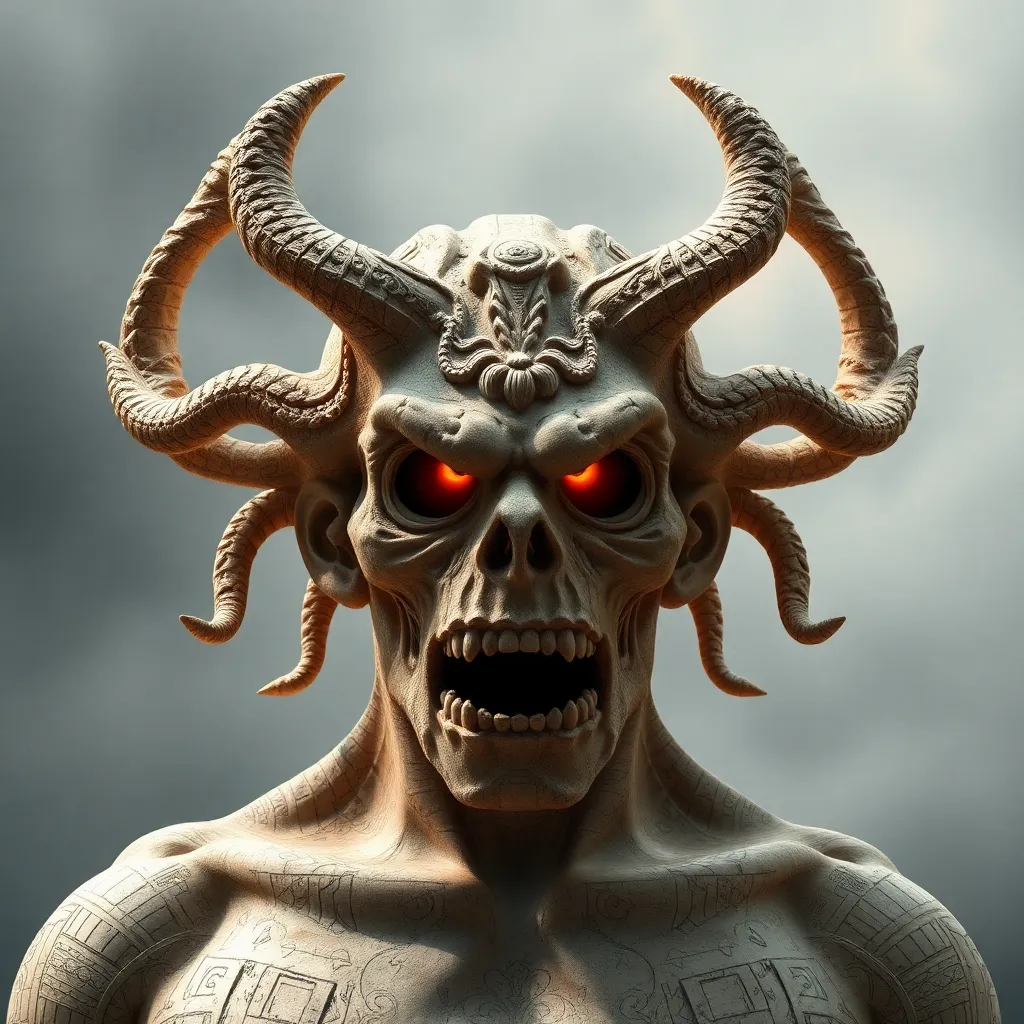The Cyclops: A Study of Fear in Ancient Greece
I. Introduction
The Cyclops, a one-eyed giant from ancient Greek mythology, has captivated the imagination of many through various tales and interpretations. These creatures often symbolize the fear of the unknown and the monstrous other, reflecting the anxieties of ancient Greek society. The significance of fear in shaping cultural norms and values cannot be understated, as it informed the mythology, art, and literature of the time. This article explores the Cyclops as a powerful symbol of fear, delving into its origins, narratives, and lasting impact on contemporary interpretations.
II. The Mythological Background of the Cyclops
The origins of the Cyclops in Greek mythology can be traced back to the earliest legends, where they were depicted as gigantic beings with a single eye in the center of their foreheads. These beings are often linked to the primordial gods, such as Uranus and Gaia, and are said to have helped forge thunderbolts for Zeus.
Key stories featuring Cyclopes can be found in Homer’s “Odyssey,” particularly in the encounter between Odysseus and Polyphemus, the most famous Cyclops. In this tale, Odysseus and his men find themselves trapped in Polyphemus’s cave, leading to a harrowing struggle for survival. This narrative serves as a lens through which we can explore broader themes of fear and survival in ancient Greece.
Variations of Cyclopean myths exist across different regions of Greece, highlighting the diverse interpretations of these creatures. In some regions, Cyclopes were viewed as benevolent giants, while in others, they were seen as embodiments of chaos and destruction.
III. The Cyclops as a Symbol of the Unknown
The Cyclops represents the monstrous other, a figure that embodies the fears and anxieties surrounding the unknown. In ancient Greek society, where the world was largely unexplored and filled with mysteries, the Cyclops served as a manifestation of the dangers that lurked beyond the familiar.
- Physical Monstrosity: The Cyclops’s singular eye signifies a distorted perception of reality, evoking fears of what lies beyond human understanding.
- Isolation: The solitary nature of the Cyclops further symbolizes fear of isolation and the unknown, as he is cut off from society and lives in a secluded cave.
The Cyclops also serves as a metaphor for human fears and vulnerabilities, representing the innate fears that reside within all individuals. The encounter between Odysseus and Polyphemus is not just a battle of strength but a confrontation with the fears that reside in the human psyche.
IV. Psychological Analysis of Fear in the Cyclops Narrative
In Odysseus’s encounter with Polyphemus, the fear of isolation and the unknown becomes palpable. Trapped in a cave with a monstrous being, Odysseus must navigate his instincts for survival while facing his deepest fears.
- Fear of Isolation: Being cut off from the outside world heightens the terror of the unknown.
- Decision-Making: Odysseus’s choices reflect the role of fear in decision-making, as he must outsmart the Cyclops to survive.
The psychological implications of facing one’s fears are evident in this myth. Odysseus embodies the struggle between rational thought and primal fear, showcasing how confronting fear can lead to growth and survival.
V. Cultural Reflections of Fear in Ancient Greece
The influence of Cyclopean myths is evident in Greek art and literature, where Cyclopes often appear as symbols of chaos and brute strength. These representations serve to reinforce societal fears while also providing moral and ethical lessons.
- Artistic Representations: Cyclopes are depicted in various forms of art, illustrating their monstrous nature and the fears they evoke.
- Literary Themes: The narratives surrounding Cyclopes often explore themes of hubris, survival, and the consequences of underestimating the unknown.
The societal impact of fear portrayed through the Cyclops narrative serves as a cautionary tale, reminding individuals of the dangers that lie beyond their understanding. Fear is not only a personal emotion but a cultural tool used to convey moral lessons in ancient Greek society.
VI. The Cyclops and the Concept of Power
The Cyclops is often portrayed as a figure of brute strength and dominance, representing the fears associated with powerful entities. In ancient Greek society, where power dynamics were crucial, the fear of such beings reflected the anxieties surrounding authority and control.
- Brute Strength: The Cyclops embodies raw physical power, representing the fear of domination by those who possess it.
- Intelligence vs. Power: The clash between Odysseus’s cunning and Polyphemus’s strength illustrates the tension between intellect and brute force.
This dynamic reflects the broader struggles within ancient Greek society, where intelligence and strategy were often pitted against sheer physical might.
VII. The Legacy of the Cyclops in Modern Interpretations
In contemporary literature and media, the Cyclops has been reinterpreted in various ways, often reflecting modern fears and anxieties. From films to novels, the Cyclops serves as a reminder of the primal fears that continue to resonate today.
- Modern Adaptations: Many modern stories draw upon Cyclopean myths, adapting them to explore contemporary themes of alienation and fear.
- Parallels with Modern Anxieties: The fears represented by the Cyclops, such as isolation and the unknown, echo modern societal fears, illustrating the timeless nature of these themes.
The lasting impact of the Cyclops myth on modern perceptions of fear highlights the enduring relevance of ancient narratives in understanding human emotions.
VIII. Conclusion
In summary, the Cyclops serves as a multifaceted symbol of fear in ancient Greek mythology. Through its rich narratives and representations, the Cyclops embodies the fears of the unknown, the monstrous other, and the struggle for survival. The continued relevance of these ancient myths allows us to explore the complexities of human emotions, underscoring the importance of studying fear through the lens of mythology. As we reflect on the Cyclops and its legacy, we gain insights into our own fears and the ways in which they shape our understanding of the world.




